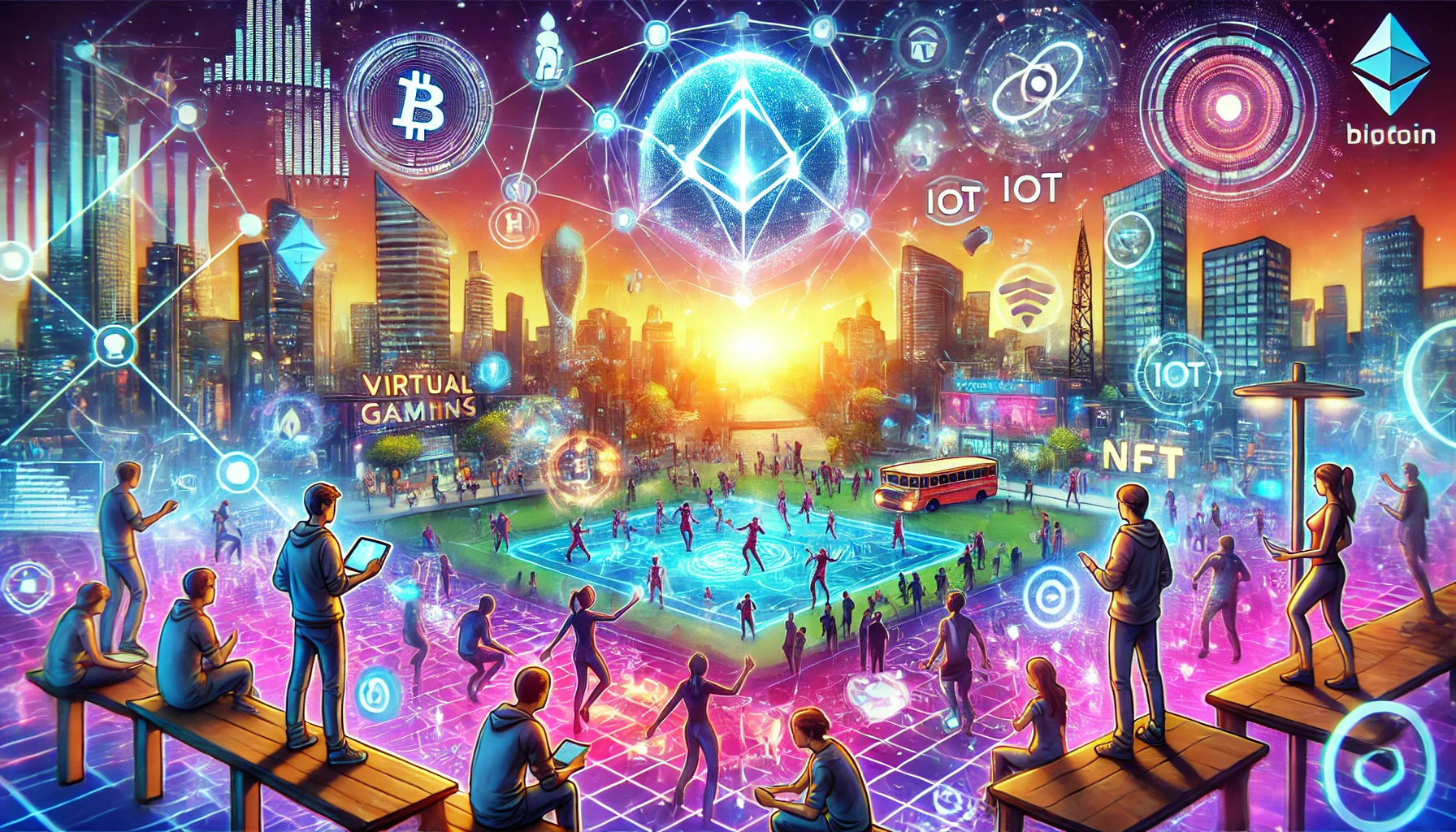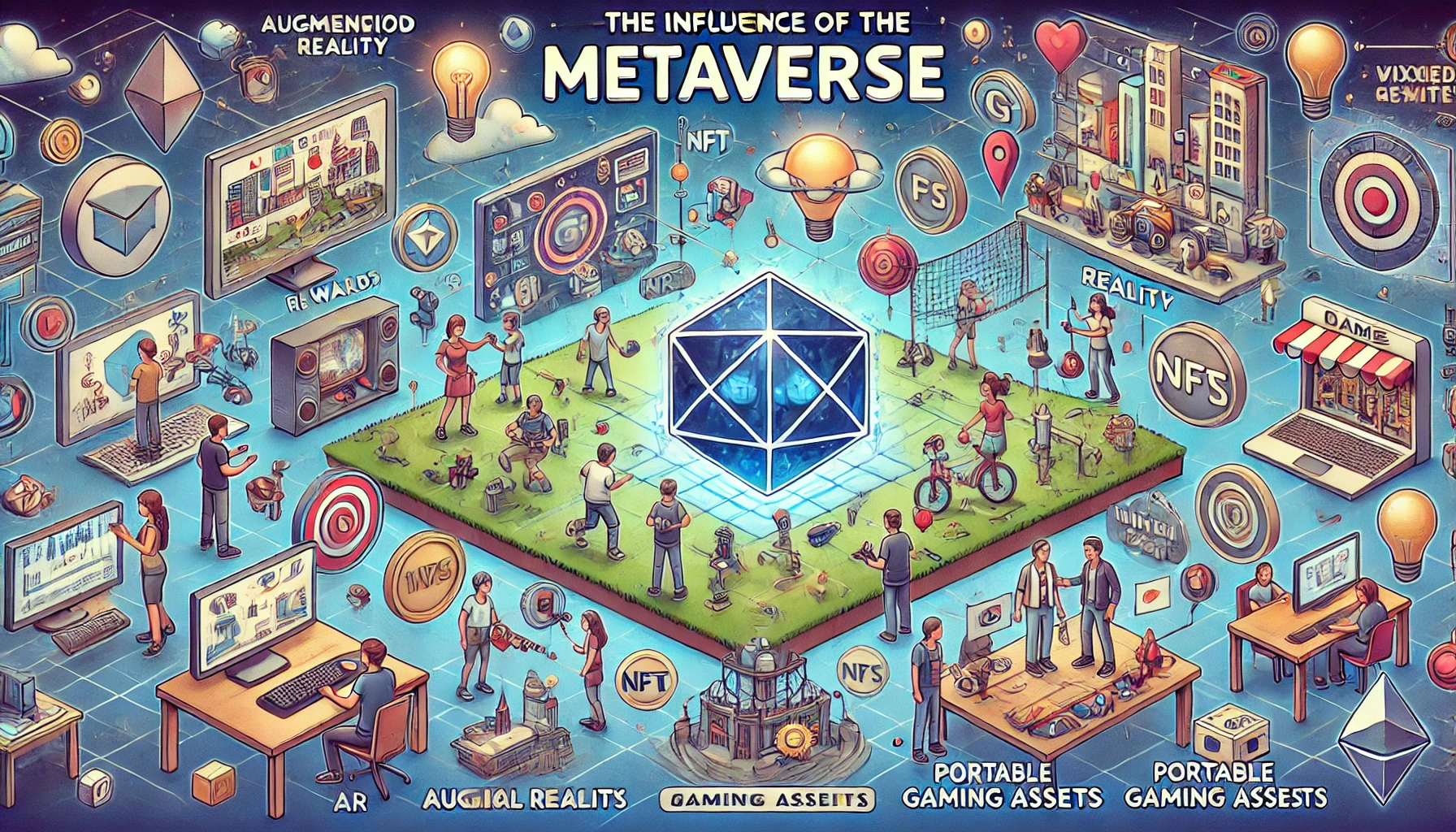In recent years, the concept of the Metaverse has been rapidly gaining popularity, promising to fundamentally change the approach to interacting with virtual worlds. At the heart of this revolutionary process are cutting-edge technologies that expand the possibilities of gaming and virtual interaction. Augmented and virtual reality (AR/VR), blockchain, and the Internet of Things (IoT) technologies lay the foundation for creating deeper, more realistic, and interactive digital worlds. Therefore, it is worth understanding exactly which technologies contribute to the development of the gaming Metaverse and how they change our experience of interacting with virtual reality.
- What is the Metaverse?
- How does the Metaverse influence virtual games?
- What aspects of games are influenced by the Metaverse?

What is the Metaverse?
The Metaverse is a concept that combines science fiction and potential future. This idea was first introduced in 1992 in Neal Stephenson's novel "Snow Crash." The book describes a dystopian future where people spend most of their time in a virtual world called the Metaverse, which is controlled by corporations and hackers. This world intertwines with the real one, and actions in one world can affect the other. An example of such a world is Steven Spielberg's film "Ready Player One" (2018), where the main character searches for an Easter egg in a massive online game to inherit the game creator's fortune.
In modern times, the Metaverse represents an immersive internet with constant access and interaction capabilities. It operates in real-time, is not limited by the number of users, and allows the transfer of data, objects, and assets between different digital worlds. This digital space, with 3D visualization, simulates reality and integrates various services, content, and branded products.
Metaverses possess several key characteristics: they never shut down and are not time-bound; they are always accessible to all participants; they have their own laws and economy, where companies and individuals can earn digital currency for completing tasks, providing services, and selling goods.
Major companies like Apple, Google, Niantic, Microsoft, and others are already actively working on creating Metaverses.
The primary application area for Metaverses remains games, providing gamers around the world with a unique and engaging gaming experience.

How does the Metaverse influence virtual games?
The Metaverse represents a new generation of virtual worlds that open up new horizons for gamers in interacting with video games. These platforms offer users around the world exciting social and economic opportunities.
| Game | Type | Opportunities | Special Events |
|---|---|---|---|
| Fortnite | Multiplayer cooperative survival game | Exploration, interaction, resource gathering, avatar customization, event participation | Virtual concert by Travis Scott in 2020 |
| Minecraft and Roblox | Games with the ability to create and develop characters | Character creation and development, interaction with advertisers | Collaboration with advertisers |
Before the concept of the Metaverse, games were primarily focused on entertainment. The main focus was on multiplayer modes and gaming tournaments. Today, there is a trend towards decentralization and hyper-connectivity. The Metaverse combines the real economy with online games, allowing NFTs and cryptocurrencies to be exchanged for in-game assets. Thus, the Metaverse brings a new form of gaming, where virtual and real worlds are closely intertwined, offering unique opportunities for all participants.
What aspects of games are influenced by the Metaverse?
- Earning in games
In recent years, "play-to-earn" games have been gaining popularity, allowing players to earn real money through their gaming activities. Thanks to blockchain and NFT (non-fungible tokens) technologies, in-game rewards gain real value. NFTs are cryptographically unique tokens that confirm ownership of digital assets, whether it's clothing, artwork, or a plot of virtual land. Unlike traditional games, NFT owners can sell their assets outside the gaming platform. Players earn cryptocurrency by following the game's storyline and rules and selling in-game items to other users.
- Social interaction in games
The Metaverse creates a social space distinct from other forms of virtual reality. Players can invite their real friends, build relationships, and communicate with other users. This opens up opportunities for fashion shows, musical performances, movie screenings, and many other events. Social games provide business opportunities due to the high degree of immersion and the ease of integrating product placements into the gaming process.
- Games as platforms
The Metaverse offers a unique gaming experience and high adaptability compared to traditional gaming systems. The gaming environment can serve as a platform for various activities, allowing users to interact with the virtual world, create their content, and develop mini-games within the main game.
- Mixed reality
Virtual and augmented reality technologies create mixed reality, where the user interacts with virtual objects using real-world items. This provides deeper interaction between the human, the computer, and the surrounding environment.
- Portability of gaming assets
The compatible architecture of the Metaverse allows gaming assets to be transferred between different games. This means that avatars or weapon enhancements can be used in multiple games. NFTs ensure the preservation of ownership rights to these assets, making them portable and secure.
Which technologies expand the possibilities of the gaming Metaverse?
Technological progress significantly expands the possibilities of the Metaverse. AR/VR, blockchain, and IoT technologies create more realistic, secure, and integrated virtual worlds, opening up new horizons for interaction and entertainment. Each of these can be explored in more detail.
AR/VR technologies. Augmented reality (AR) and virtual reality (VR) play a key role in the development of the Metaverse. Augmented reality adds virtual elements and sensory data to the real world, providing a new level of interaction. This is achieved by overlaying digital images and graphics onto the environment using mobile devices, laptops, or tablets, changing the perception of the real world. Virtual reality creates a fully digital environment generated and controlled by a computer. The user immerses themselves in this environment using special equipment such as helmets, glasses, or controllers, which allow them to control their actions in the virtual world.
Blockchain technologies. Blockchain provides a decentralized foundation for the Metaverse, allowing participants to have equal opportunities and control the development of the virtual world. Previously, virtual worlds were controlled by corporations, but the crypto Metaverse is decentralized and governed by its users. Even if the developer company shuts down, the game will continue to exist. Decentralized autonomous organizations (DAO) and governance tokens are used in crypto Metaverses to enable users to make changes and updates.
Internet of Things (IoT) technologies. The Internet of Things is a system of devices connected to the internet that automatically collect and analyze data. As IoT integrates further into the Metaverse, new possibilities will open up for virtual spaces to interact with and access the real world. This will allow virtual environments to gain access to real-world information and interact freely with the physical world.





